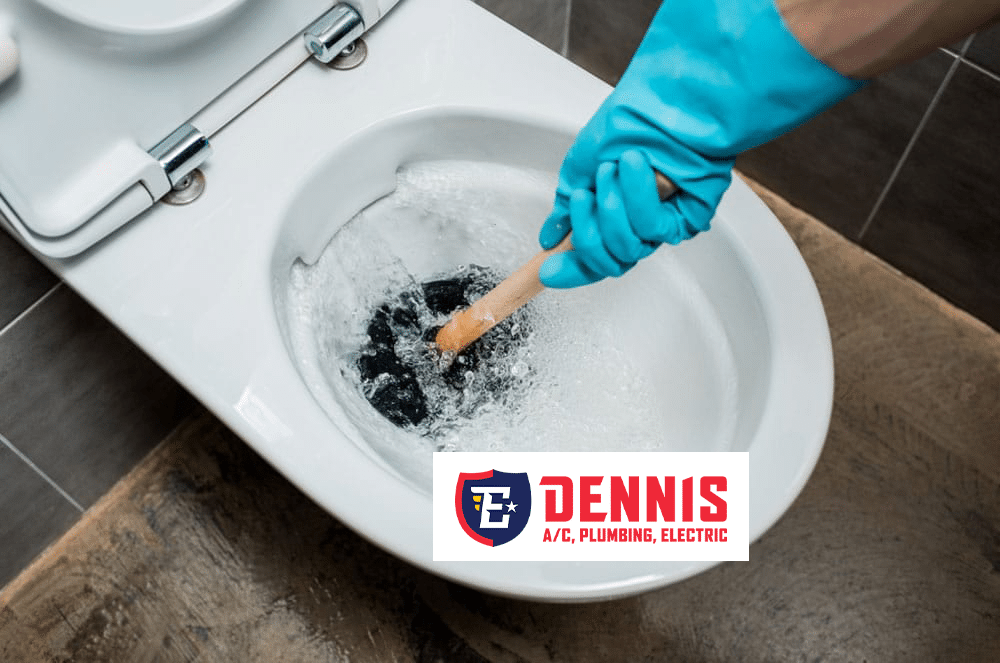How to Fix a Toilet That Won’t Flush
Versions of flushable toilets have existed for many centuries, but the first type that most people today would recognize dates to the end of the 16th century. Since then, toilet designs have changed radically. Unfortunately, despite more than 300 years of engineering progress, no one has been able to solve the occasional problem of a toilet not flushing as it should. The good news is that the problem can often be corrected quickly and easily by determining why the toilet won’t flush and applying the proper fix.
The Problem Is a Clogged Toilet
One of the most common reasons why a homeowner’s toilet won’t flush properly is because the toilet is clogged. Clogs often develop as the result of flushing or attempting to flush too much toilet paper or items that should not be placed in a toilet. These include paper towels, balls of hair, diaper liners, feminine hygiene products, dryer sheets, cotton swabs, and so-called flushable wipes. Some of the toilet paper brands marketed as having superior strength can also lead to problems with clogs.
A clogged toilet is easy to identify; when you flush, water enters the toilet bowl, and the level rises. If this happens, wait a few minutes to see if the water level falls. A drop in the water level is often a sign that the toilet is only partially clogged, but the reduced level gives you a little more room to work on the clog without splashing water on the floor or having to bail out the toilet bowl.
Depending on the tools available to you and how quickly you need to unclog the toilet, try these methods to clear the blockage.
- Use a toilet plunger: Plungers are manufactured in two styles. Sink plungers have rubber cups that are shaped like a small toilet bowl, and, although colors vary, the rubber cups are frequently red. Toilet plungers have cups with a bell-shaped appearance and are often black in color. To use, insert the plunger and tilt it a little to allow water inside the cup to create suction. Use short, quick strokes for plunging, making sure that you do not allow air to enter the cup and break the suction.
- Use a toilet auger: A toilet auger is similar to a plumbing snake, but it is designed to prevent inadvertent damage to the toilet. Insert the end of the auger into the drain hole of the toilet and move it around.
- Use warm water: If you do not have a toilet plunger or auger, you can try performing a manual flush. Fill up a trash can or other receptacle with about a gallon of warm water. Pour the water quickly into the toilet bowl. Wait for about 10 minutes. If there are no results, you could add a little liquid dish detergent; wait another 20 or 30 minutes to see if the detergent provided enough lubrication to allow the clog to slip through the pipe.
The Problem Involves the Flapper Assembly
If you find your toilet is not flushing properly, check your toilet handle and flapper assembly. When you remove the toilet’s tank lid, you will see that there is a chain attached to the flushing lever. The other end of the chain is attached to a piece of rubber known as a flapper valve. When you depress the lever, the chain lifts the toilet flapper, allowing the water in the tank to rush into the bowl.
Occasionally, a flapper chain can slip from its hook, and the toilet won’t flush if the chain is disconnected. This is one of the easier bathroom repairs! Simply hook the chain back into position.
Make sure there’s not too much slack in the lift chain. Flapper chains should have only about half an inch of slack. If they are too long, the flapper may close before enough water has left the tank to ensure a proper flush. You can make simple adjustments to fix this. To reduce the slack, unhook the chain and choose a link nearer the flapper.
Over time, flappers can degrade, and a broken, warped, or deteriorated flapper cannot maintain a proper seal. Purchase a replacement at a local hardware store. A leaking flapper can also cause your fill valve to run. If you have a running toilet, check both your flapper valve and your fill valve. The fill valve may be at fault if your toilet flapper isn’t to blame.
The Problem Involves the Tank’s Water Level
Most toilets need to empty at least 80% of the tank’s total capacity for a successful flush. If the tank is not filling sufficiently, a partial flush may occur. If the tank is completely empty, the toilet won’t flush at all.
The first thing to do is to check the obvious. Make sure that the water valve behind the toilet has not been turned off accidentally. If that is the problem, turn the valve, then make sure that the tank fills.
Another possible reason for a toilet not flushing could be that the valve is on, but the water in the tank does not reach the appropriate level. The water level should be within an inch of the top of the overflow tube. Check the overflow tube to make sure that it is not cracked; if so, you can purchase a new one and try replacing it yourself, but you should probably call a professional plumber to handle the task. If the overflow tube is intact, you may be able to adjust the water level by adjusting the water valve. Just be sure to monitor everything closely throughout the initial fill, then make two or three test flushes before deciding that the issue is resolved.
The Problem Is That the Rim Holes Are Clogged
Although you may never encounter this issue, it can occur in areas in which the water contains high concentrations of calcium, lime, or similar minerals. Mineral deposits can build up and clog the holes at the top of the bowl’s rim. Since these are the holes that allow water to enter from the tank, if they become blocked, the toilet may not flush completely. To check, insert and remove a piece of wire into each hole; the wire may dislodge the blockage and take care of the issue. If necessary, you can add some vinegar to the toilet tank or clean the holes with a toilet cleaner designed specifically to remove mineral deposits.
Call a Professional
If your toilet still won’t flush after investigating all of these issues, it is time to call a reputable plumbing company. There are many other causes of problems with toilets that will require special tools and training to remediate. A licensed plumber can help and has the expertise to fix the issue.
Give us a call for help with any plumbing issue. We serve customers throughout Atlanta and the surrounding area with fast, courteous service, deliver high-quality plumbing services, and charge reasonable rates.




